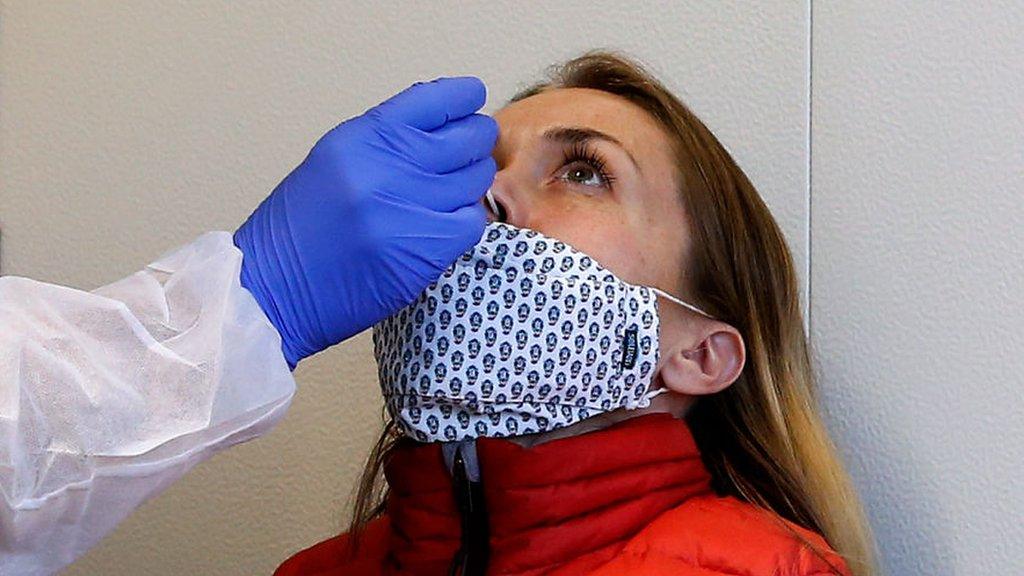R number for UK has fallen to between 1 and 1.2
- Published
- comments
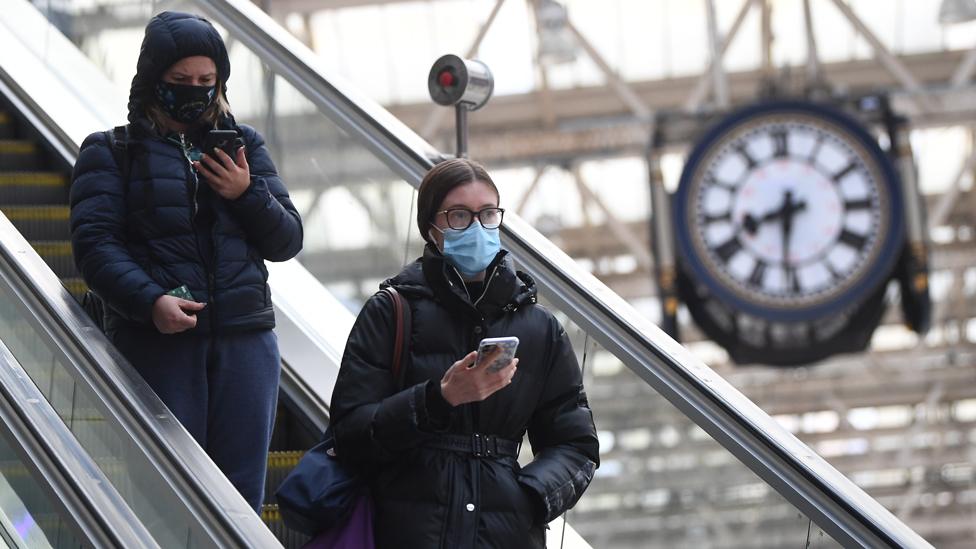
The R number for the UK has fallen to between 1 and 1.2, the closest it's been to 1 since early September.
It comes as the Office for National Statistics, external says the number of people infected with coronavirus is slowing down.
Data up to 6 November, the day after England's second lockdown began, shows infections falling in the north west but rising in the south and Midlands.
In Northern Ireland, infection rates were levelling off, the ONS says.
But in Wales rising infection levels were still continuing.
And it's too early to say if they were stabilising a week ago in Scotland.
Although growth may be slowing in some parts of the country, the government's scientific advisers say "significant levels of healthcare demand and mortality will persist until R is reduced to and remains well below 1 for an extended period of time".
An estimate of the R number, or reproduction number, of the virus is published every week and based on a number of different sources of data, including the ONS infection survey.
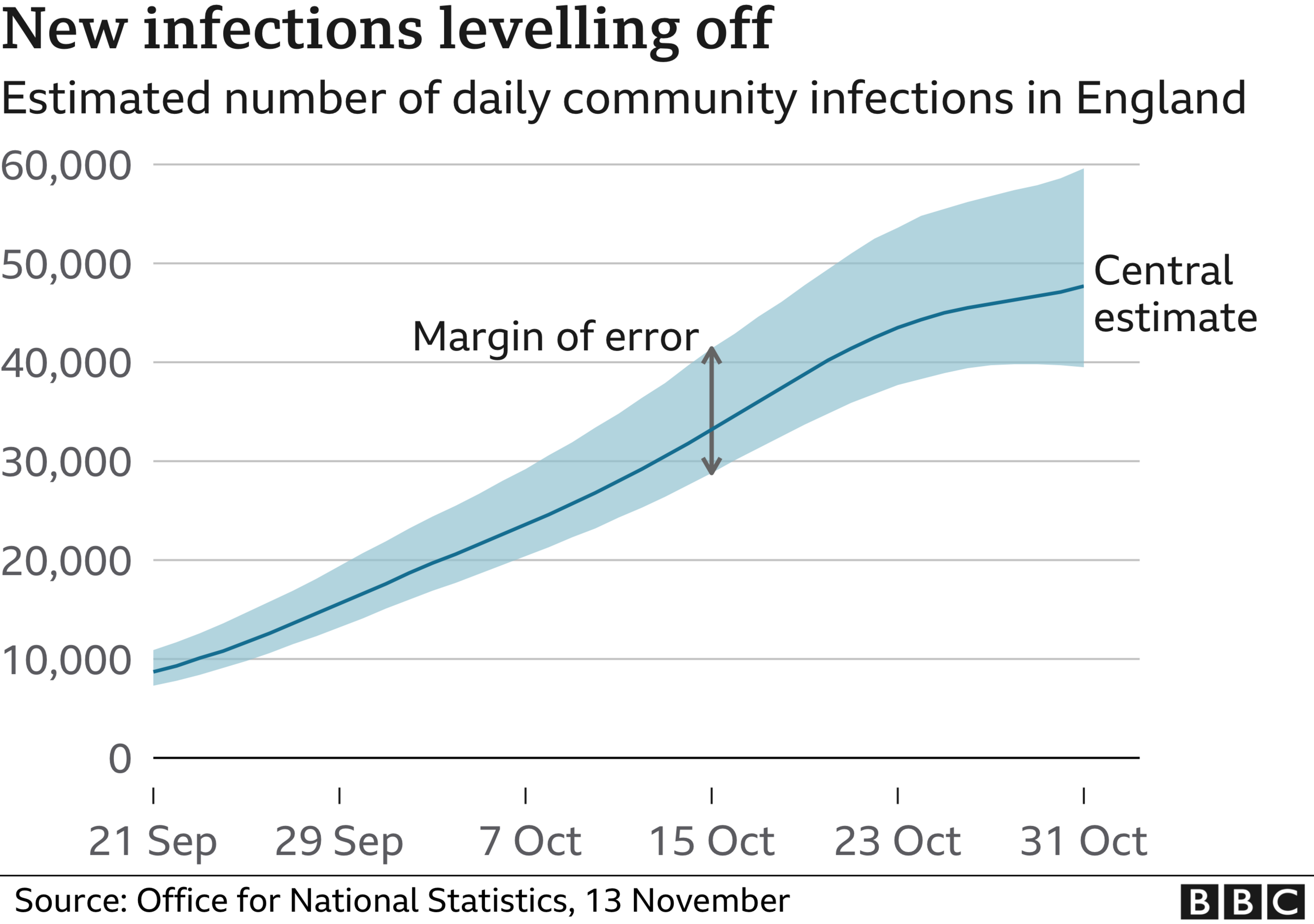
The ONS figures are based on thousands of swab tests in random households across the UK, thought to be one of the most reliable ways of judging how many people are infected with the virus - not just those with symptoms.
The data for the week to 6 November shows:
1 in 85 people had the virus - or around 620,000 people in England
1 in 85 - or 35,300 people in Wales
1 in 105 - or 18,000 people in Northern Ireland
1 in 135 - or 40,000 people in Scotland
In England, the number of new cases is stabilising at 50,000 per day, the ONS says.
But infection rates appeared to be increasing in the south east, south west and East Midlands during that week where they had previously been low.
Among teenagers and young adults, who have seen the highest levels of the virus, infection rates appear to be levelling off or even falling.
Data from the Covid symptom app, external, based on one million people reporting symptoms, suggests cases are coming down across most areas of the UK - although numbers are still high.
Their figures are based on 13,000 swab tests carried out by users during the two weeks up to 8 November.
Government figures on lab-confirmed cases show a picture of rising cases in many regions of England, but falling in the north west.
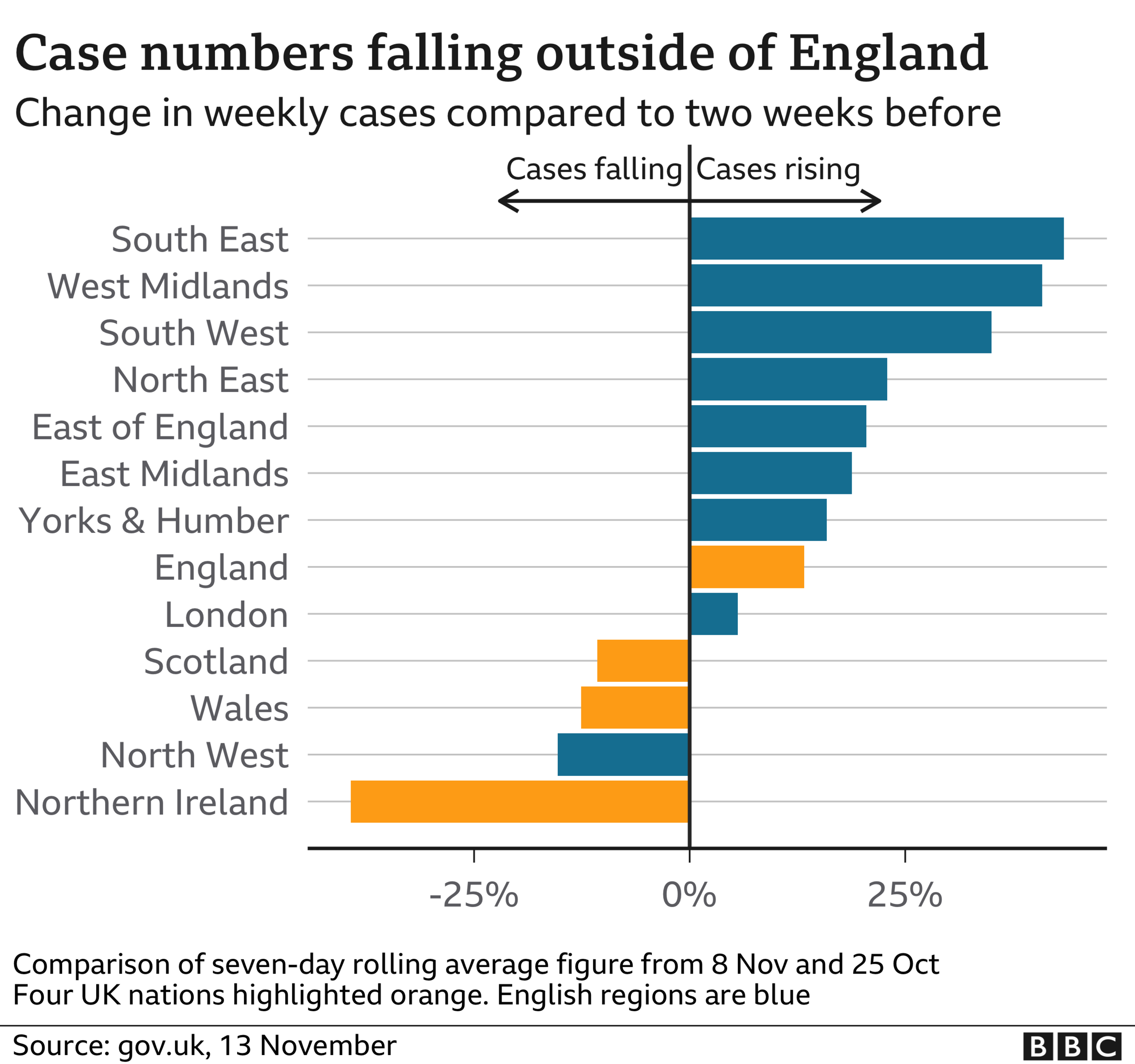
On Friday, there were 27,301 new confirmed cases of the virus in the UK - down from a record-high of 33,470 on Thursday. These represent people with symptoms who've received positive tests.
Health officials said Thursday's rise could be a result of people being infected while socialising in the days before England's second lockdown started on 5 November.
According to the latest data from Public Health England, infection rates are rising quickly in the over-80s, who are most at risk from Covid-19.
PHE said limiting contact with others "will help to stop the spread of the virus and protect the people we love".
Different levels of restrictions on people's lives are currently in place across the UK.
- Published5 July 2023
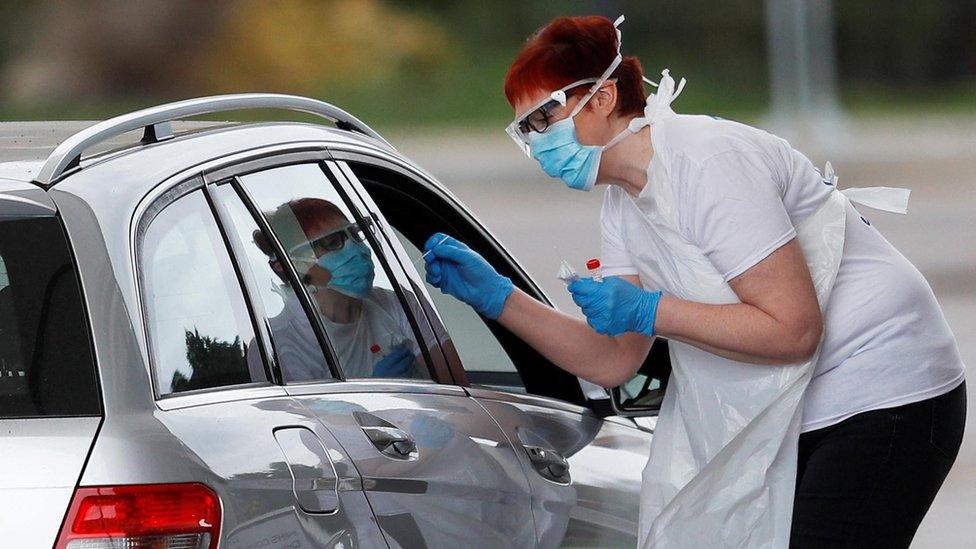
- Published12 November 2020
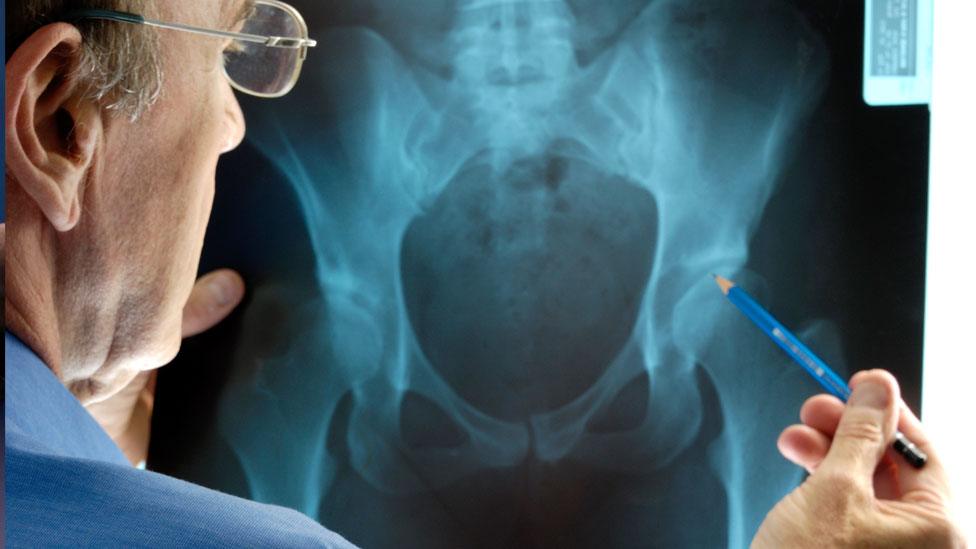
- Published6 November 2020
